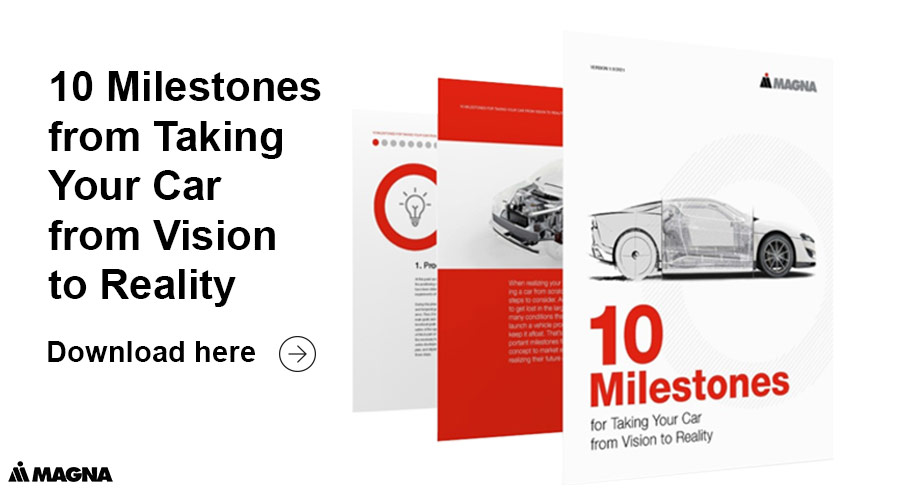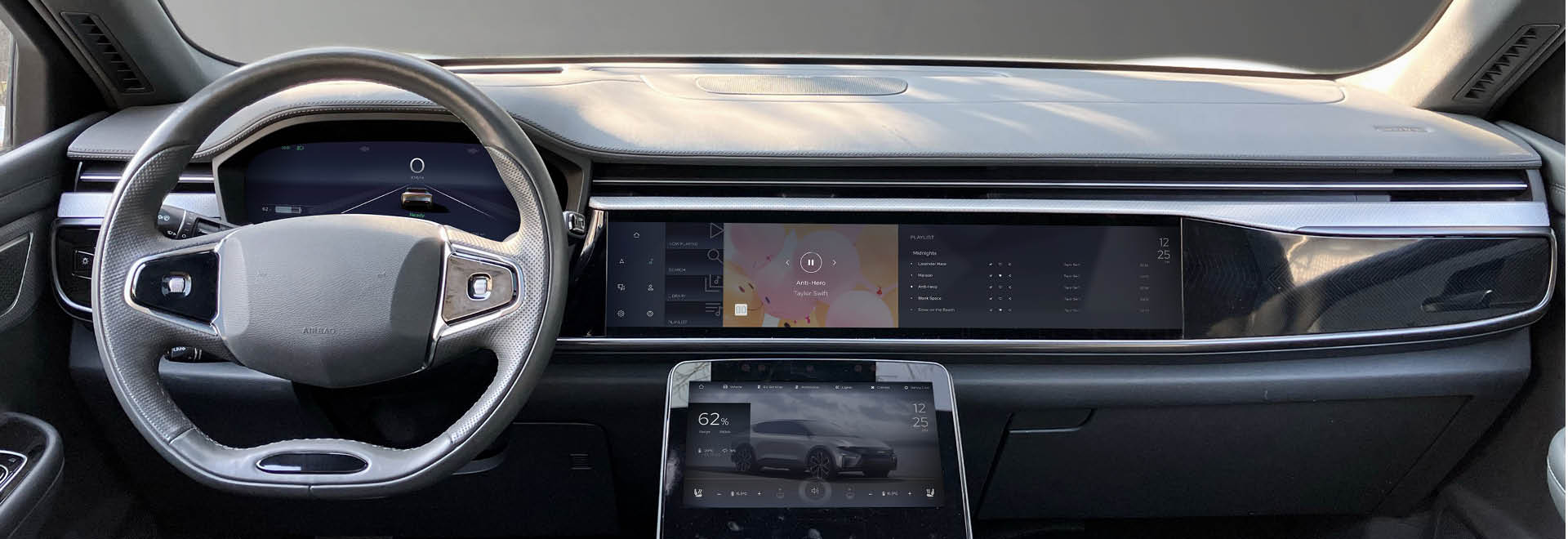EVERY VISION OF AN ELECTRIC VEHICLE HAS A
STORY TO TELL
Communicating a future automotive brand is a step new entrants will have to take sooner or later. Therefore, it's wise to do so as soon as possible with a show car, as the public release of a vehicle will still take about 2-3 years. By that time, the vehicle should already be publicly known because it will need to garner brand recognition and trust from the intended target audience to ensure they actively seek out the electric vehicle at launch.
Luckily, there's no need for the vehicle to be finished in order to promote it. Creating a story to accompany the vision of your electric vehicle, forming a success story out of the journey, and emphasizing the unique und recognizable assets of both the vehicle itself and its brand will allow for the efficient formation of a clear, communicable brand identity.
THE SHOW CAR: A REPRESENTATION OF YOUR VISION
Of course, in order to really fire people up about an upcoming electric vehicle, showing them an actual car will greatly help with garnering that enthusiasm. For this reason, a show car is commonly used in tandem with brand debuts.
As its name implies, a show car essentially serves to show what makes a vehicle stand out among the rest. It's a design-oriented vehicle that highlights the planned features and styling of a vehicle and is, therefore, specifically used for presenting everything the vehicle has been made out to be, the vehicle is set out to be. The show car presents its underlying product vision to investors, buyers, and journalists alike in a convincing and „real“ fashion – it's a must-have for every planned public debut.
In general, it's recommended to start planning a show car around the same time the feasibility study is conducted, since the show car will also take several months to finish. The development period can range from about 6 to 10 months depending on what the show car should be able to do.
The focus should be on implementing everything that's considered beneficial to the intended product vision in terms of included features. Aside from general styling and the appearance of the car, this also includes every feature that makes the car recognizable.
If its main USP is
- an innovative software, then this software should be implemented in the show car.
- a particularly secure car, then every feature relevant for ensuring said security should be implemented.
The show car primarily serves to promote the future vehicle, not to give insights on the current stage of development. As such, the show car can omit certain limitations. It doesn't even necessarily have to be drivable, unless it's intended to be.
PLANNING YOUR DEBUT OF THE SHOW CAR
As important as designing a show car is, the event at which it will be presented is just as paramount to the public‘s first impression of the vehicle. It‘s possible to present the car at a public motor show, however, this option takes away most of the control that the vehicle owner has over the presentation. Hosting a private event is an alternative to such public motor shows. This option, while more time-consuming to organize, allows the oraganizer to keep full control over every aspect of their public debut, from the organization and proceedings of the event itself up to the actual unveiling of their brand and the show car that represents it.
INVITE THE EXPERTS TO SEE THE SHOW CAR
Choosing to host a private event also means that its invitees can be selected freely. The host can, therefore, invite specific people they want to show their vision to the most. This is an especially profitable measure when looking for partners and/or investors to back the project. In short, a private event is the opportune choice for meeting with a select group of potential investors, business partners, or journalists.
Speaking of journalists, there is one key resource in the development process that has not yet been attained: public opinion. The show car presentation will be the first and most important instance for obtaining feedback from people who are not involved in the development process at all – most importantly, from trade journalists who will inevitably form an opinion about both the show car and its owner. This will provide a clear picture about potential improvements to the product and brand, provided that the feeback can be properly organized and interpreted.
WHAT'S NEXT?
New entrants in particular should continue to regularly communicate developments to the public and (ideally) show multiple show cars during the continuation of their electric vehicle’s development and later production phase. As they are yet largely unknown in the market, it‘s wise to show every step of the vehicle‘s development, as this will cement the new entrant as a player to be recognized instead of a passing fad. But regardless, once the unveiling of the brand has been accomplished, it‘s time to move into the next phase – finding the right investors for the project.



.tmb-widescreen.webp?sfvrsn=8d57edff_1)


